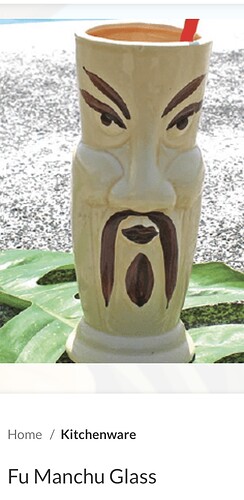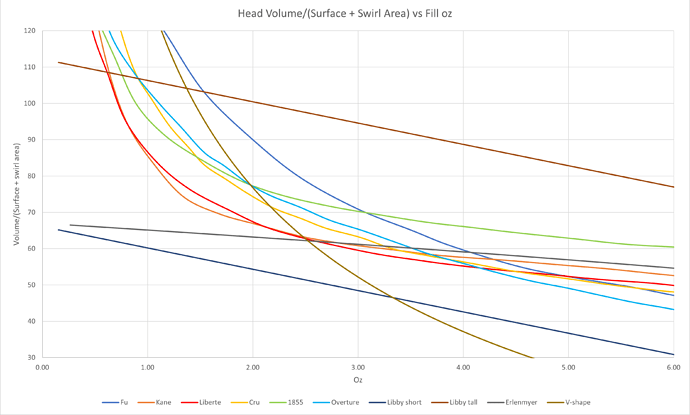not sure why
To what degree do the glass walls “capture” and hold the VOCs that have entered the airspace above the surface of the wine? This relates, I think, to the hypothesis that short walls (once above the pour surface) are better because they get your nose closer to the surface. If I have two glasses with equal max width but different heights (meaning in this example, the height of the glass walls above the widest point), and fill each glass to its widest point and let it sit for 5 minutes and then sniff, will I get more aroma in the shorter glass because my nose is closer to the surface of the wine, or will I get more aroma in the taller glass because, while the same amount of VOCs have entered the air, more of them went above the height of the walls in the shorter glass and then blew away?
Re: Alan. The man doth thinks too much, methinks.
Not unreasonable, but certainly not for this post ![]()
I’m constantly modeling stuff in excel, just for fun lol
Now that I’m retired, and no longer sitting in front of a Linux or Unix box all day long, I have to find other ways to entertain myself ![]()
That can definitely be true toward the end of a glass, when there’s not much liquid left. Years ago I posted some mock up pictures of different shapes, tilted at an angle to drink, illustrating that in the majority of cases it doesn’t matter what the glass shape is: the wine pours out through a similar sized opening in every case, and what shape contains it behind that opening has zero impact on how the wine enters your mouth (if that’s even a factor, which I don’t personally accept).
Notice that there is a fairly narrow range of diameter at the lip of all the glass shapes I modeled. I’ve seen some extreme glassware, with a tiny opening. Impossible to get your nose in there, I guess the theory is that it contains the aromas better, and you’re just nosing what manages to come out of that small opening.
I plugged in two cylinders (modeled after two Libby juice glasses I have in my kitchen, lol). Both about 3 inches in diameter, one 3 inches tall (so essentially an Old Fashioned glass), and the other about 5 inches tall. Then kind of an “erlenmeyer” shape, with a base of 10cm diameter to match the width of the largest glasses, and an opening about 6 cm in diameter. And finally a narrow martini shape, essentially cone with a narrow base, and a top diameter of about 10cm. I think you can easily taste out of an old fashioned glass (bottom line), and get a decent sense of the wine. The tall cylinder (top line) is pretty crappy. The “erlenmeyer” is fine, pretty much mimics shapes like Kane and Liberte. The “martini” is OK, even pretty good if you fill it almost full, but has the disadvantage that any slight air motion around the glass (like picking it up, lol) will blow away the volatiles that have accumulated in the head space.
My parents’ wedding registry glassware set were cylinders of different sizes on stems. I’m pretty sure one of the sizes was essentially an old fashioned glass on a stem.
We rarely used them because that was “the good set for company.” But it’s good to know there was something to them (I didn’t like them much at the time). I don’t recall swirling in them though. Maybe their square base hindered it.
In a previous life some of us would covertly drink wine from those wax coated paper cups. To swirl you’d hold the cup from the top - hand with fingers downward and around the sides. Swirl in an inverted conical movement. Smell through the arch of your hand between the thumb and forefinger, Having the hand over the top protected the aromas from being blown out by a breeze. It worked well. That may be the best way to deal with a straight sided glass that isn’t conducive to conventional swirling…plus it allows aggressive swirling where the glass size is small, so a small cylinder or mild conical section is replicating a much larger bowl.
Just don’t tell my wife the Waterford might be OK for wine.
I love seeing my wine glass getting 1st place in every single one of these graphs. It feels good to be the champ. Thanks, Alan.
Your glass is a good one! As I said, I drink out of the Liberte, which is similar. The one difference being yours is a little taller bowl, so on the alternative metric you want to make sure to keep it filled adequately. Lots of excellent glasses in this shape, including Gabriel, Zalto, etc. I suspect there’s a good reason for so many high quality glasses having this shape, even apart from the fact that they look and feel good.

